What Is the Horizon Line?
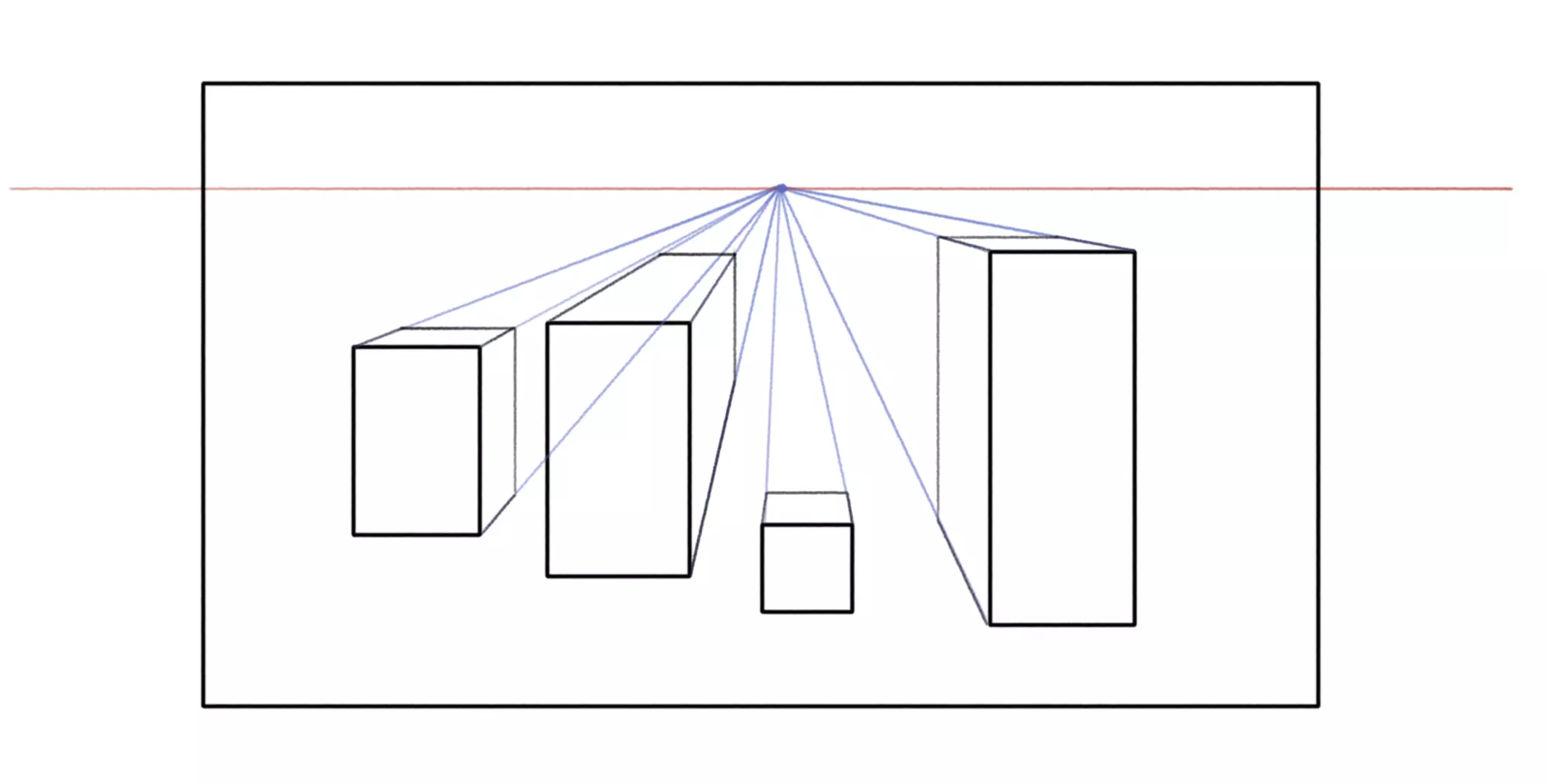
In drawing, it is important to have a coherent scene. For this, the essential tool to know how to use is the horizon line. In this article we will see what the horizon line is, what it represents and how to use it in our illustrations. To fully understand this article, some knowledge of perspective is necessary; if necessary, please refer to previous articles dealing with perspective.
THE HORIZON LINE: SOME CONCEPTS
Traditionally, the horizon line is the line that represents the observer's gaze. It can be more or less high in the frame of our scene, and dictates the angle of vision. It's somewhat like representing the eyes of our observer, or the lens of our camera.
There are three types of camera angles: frontal view, high angle, and low angle.
A frontal view means that the observer is at eye level, facing the subject. It is the most common view.
A bird's-eye view means that the observer is looking at the scene from above. This is what you find in an aerial view of a city, for example.
Finally, a low-angle shot places the observer below the scene. This is the case when there is a view from the ground, or when looking up at a tall building.
Concretely, objects located under our horizon line will be viewed from above, those above our horizon line will be viewed from below, and those crossing the line will be at eye level in relation to our observer.
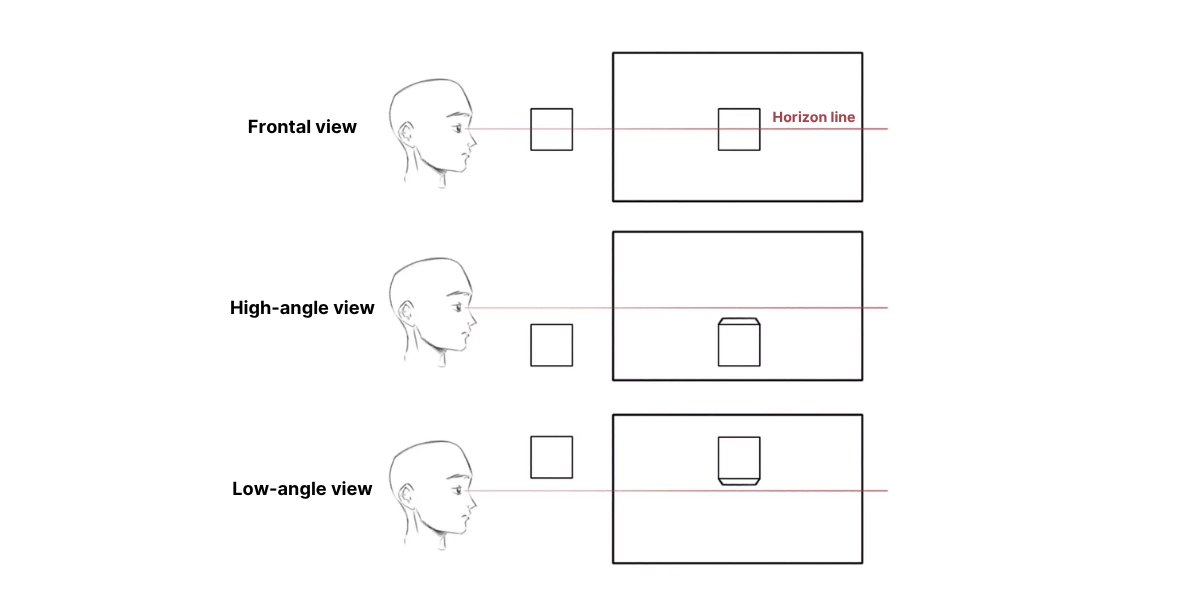
The vanishing points of our objects lie on the horizon line. For our scene to be consistent, all vanishing points must lie on the same horizon line.
USE THE HORIZON LINE ON DIFFERENT LEVELS
The horizon line is therefore very useful for placing different objects in the same scene. It can be used as a scale reference for objects of approximately the same size, but not located on the same planes.
To better understand this feature, let's draw a little scene together with several characters at different levels.
First, we position an initial character. If the observer is at eye level, the horizon line should cut across the character at shoulder height.
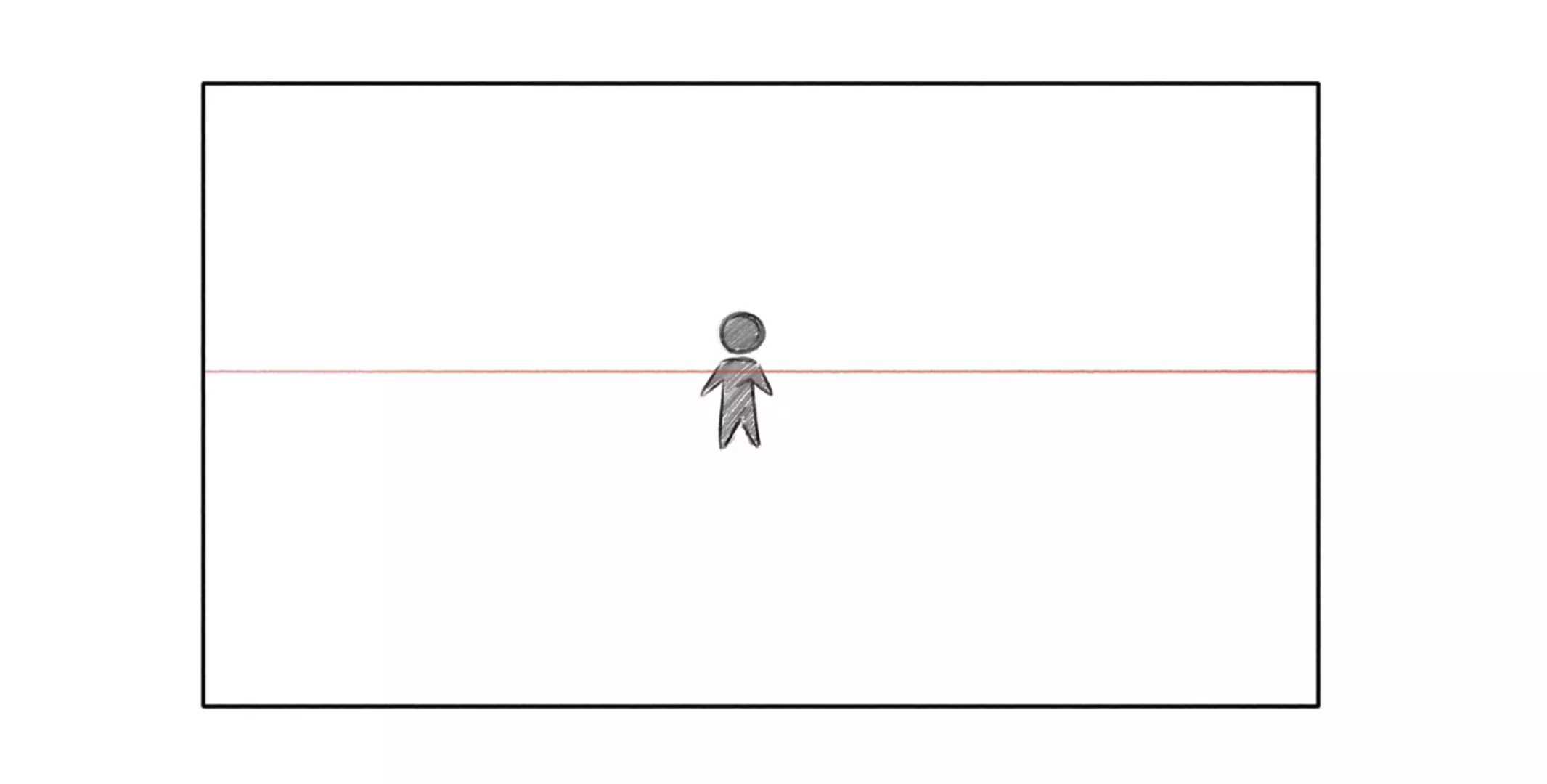
To add a new character to our scene, simply replicate the first one larger or smaller, making sure their shoulders intersect the horizon line.
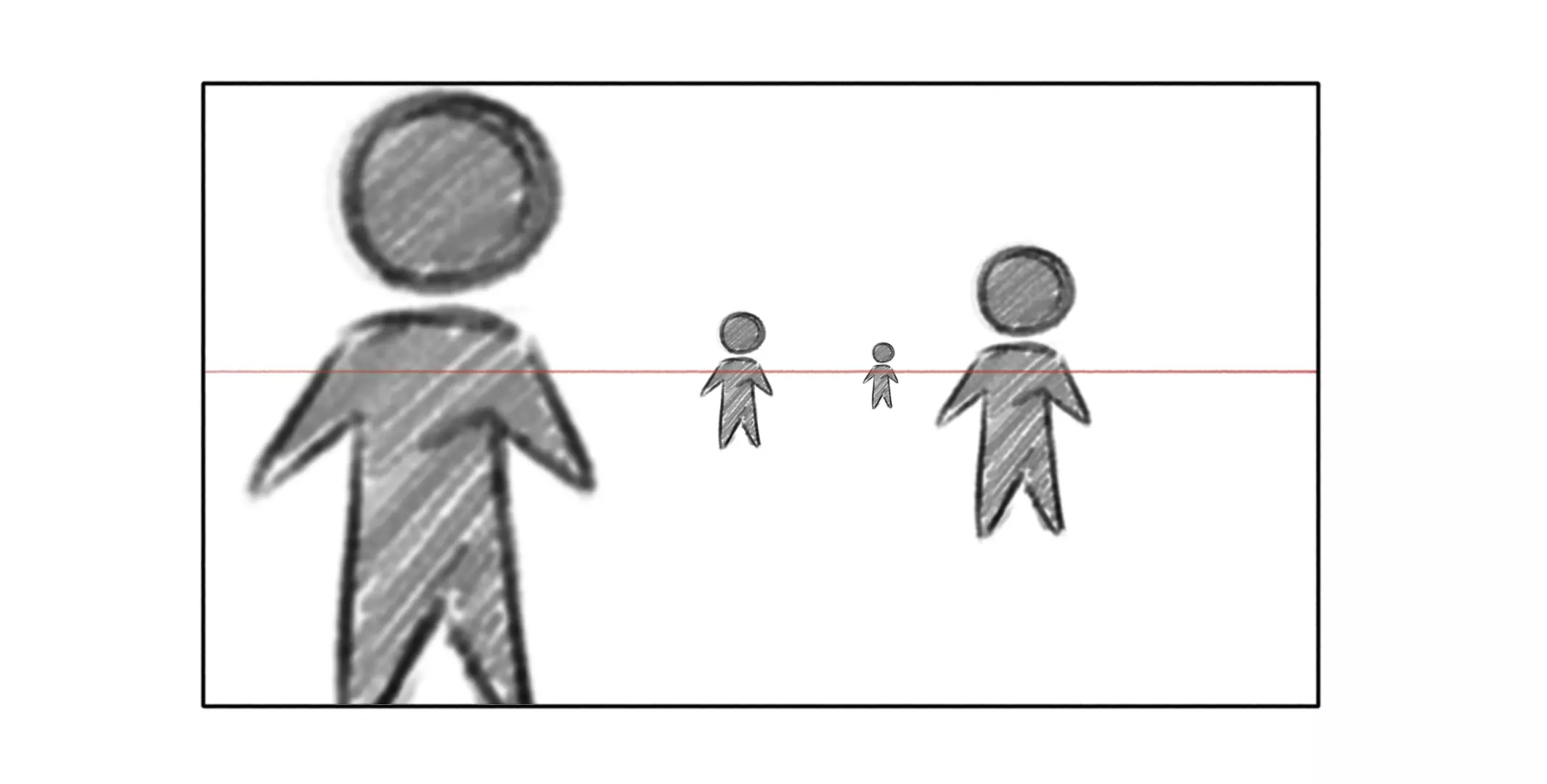
In this way, we have 4 characters that belong to the same scene and seem to touch the same ground. But what would happen if one of our figures did not cross the horizon line at shoulder level?
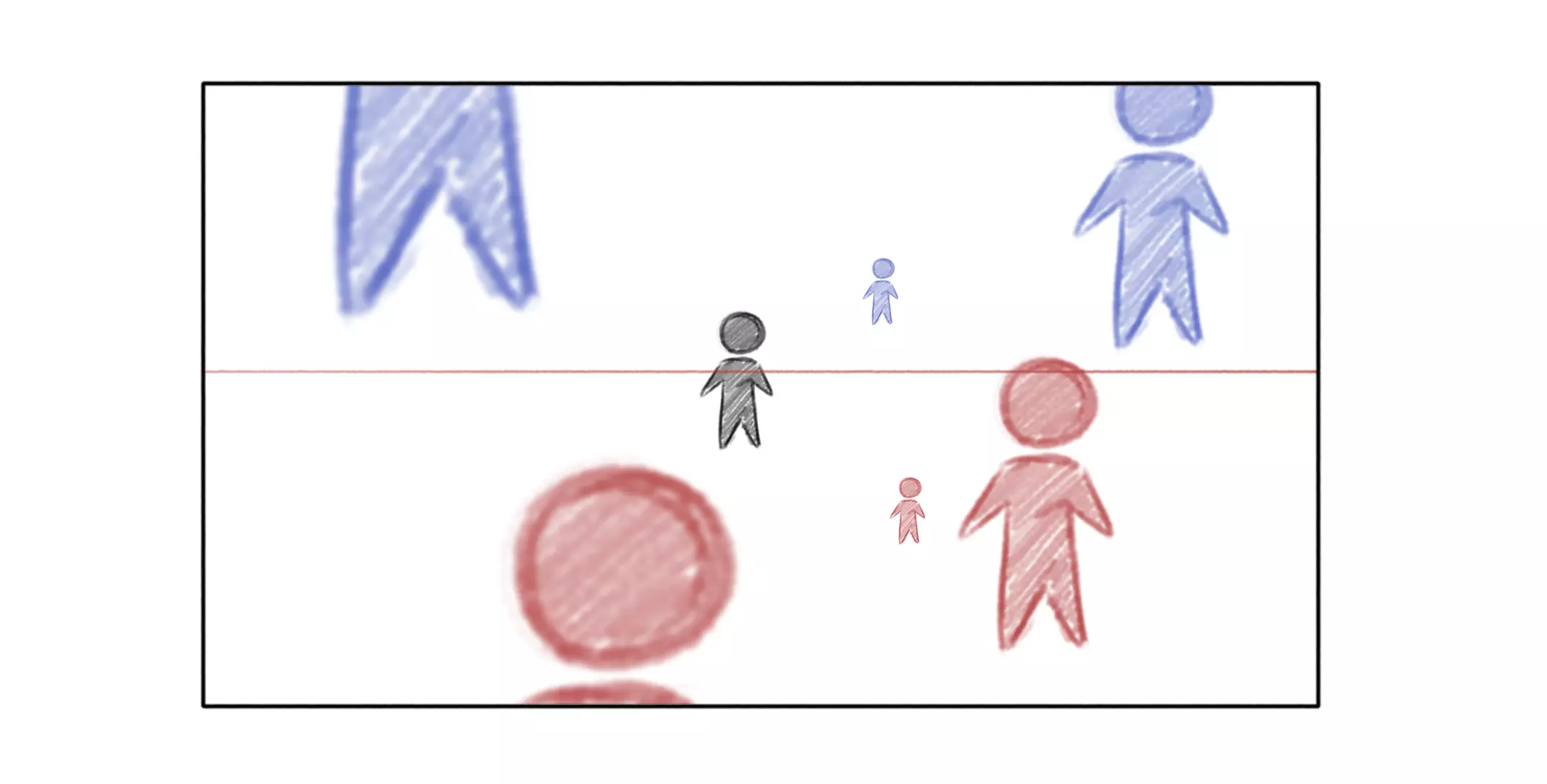
As you can see, the blue figures seem to be floating in the air while the red figures look like they are sunk into the ground compared to the gray figure...
HOW TO CHANGE THE ORIENTATION?
The horizon line allows us to place different objects in the same scene, even if they do not have the same vanishing points. To illustrate this principle, we will draw dice rolled on a table.
First, let's place our horizon line and a couple of vanishing points. We will draw our first dice from these.
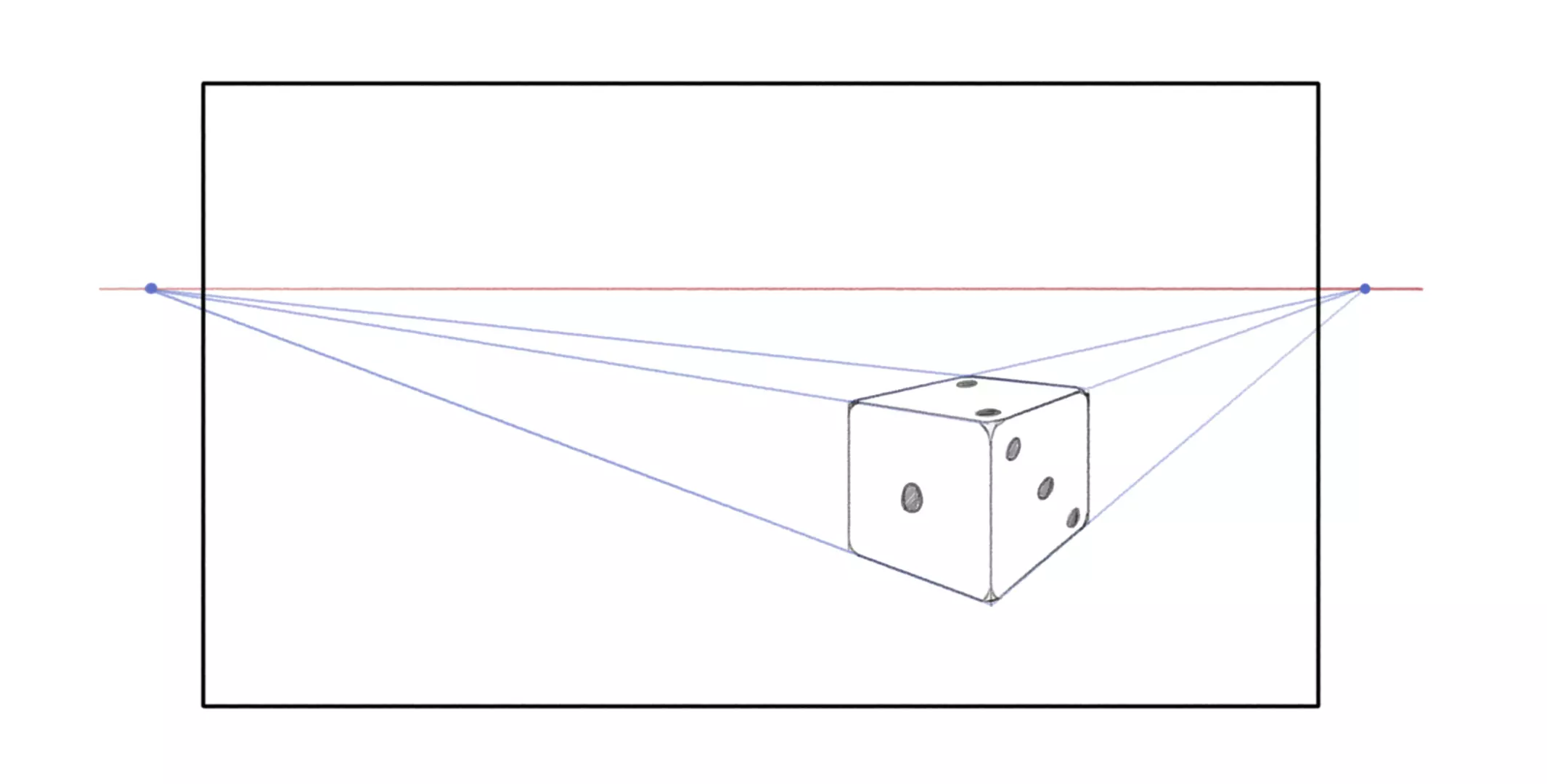
Now, let's assume that our player has thrown two dice on the table. Generally, the dice do not land aligned; their orientations are different. If their orientations are different, then the dice do not have the same pair of vanishing points. Therefore, we will place 2 more vanishing points on our horizon line for our second die.
Attention: the space between the escape points of die 2 must be the same as the space between the two escape points of die 1!
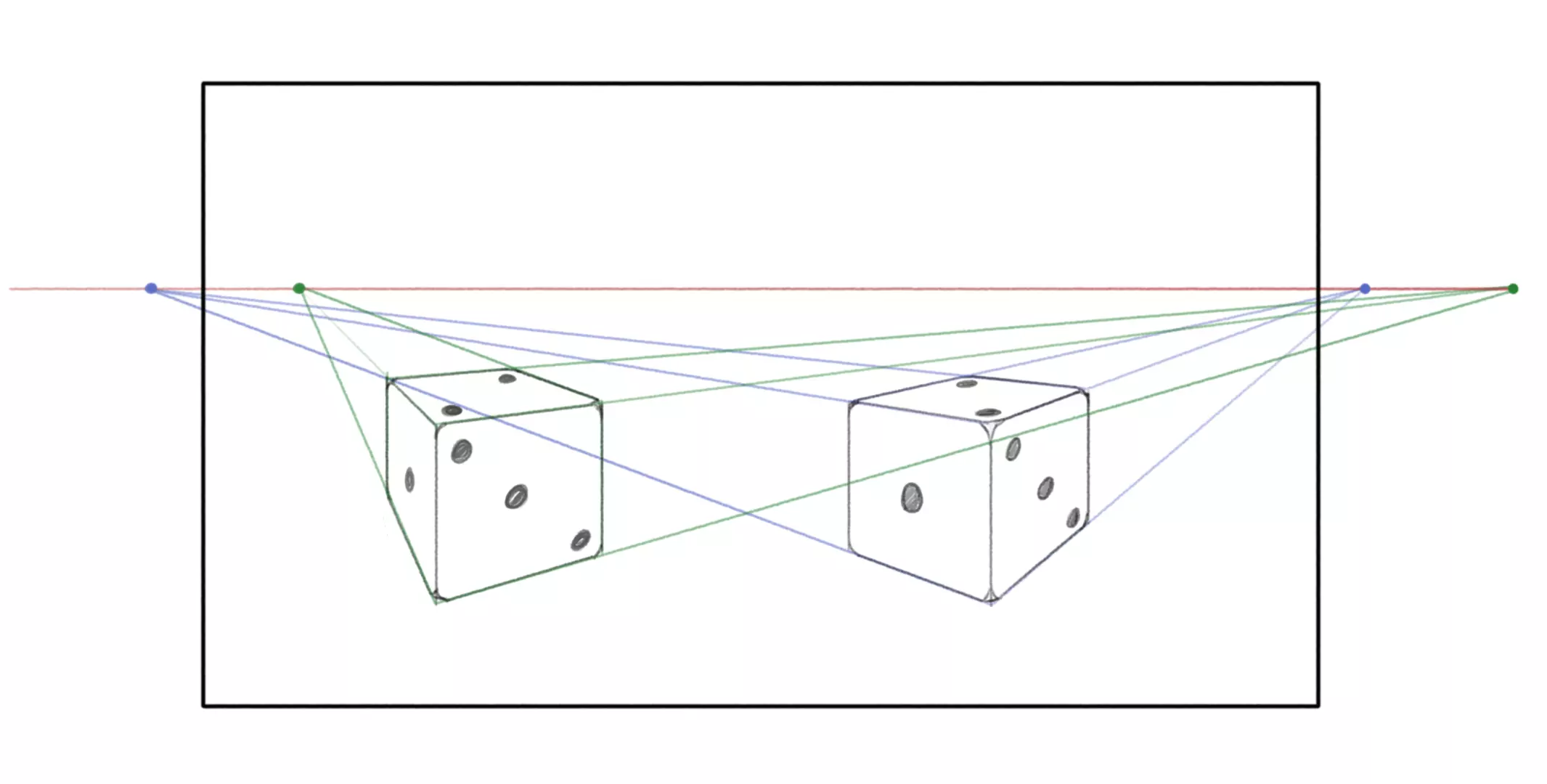
Perfect, you have your second die on your table!
HOW TO CHANGE THE POINT OF VIEW?
Finally, we will see how to change the perspective of a scene.
Let's consider this set of blocks for example:
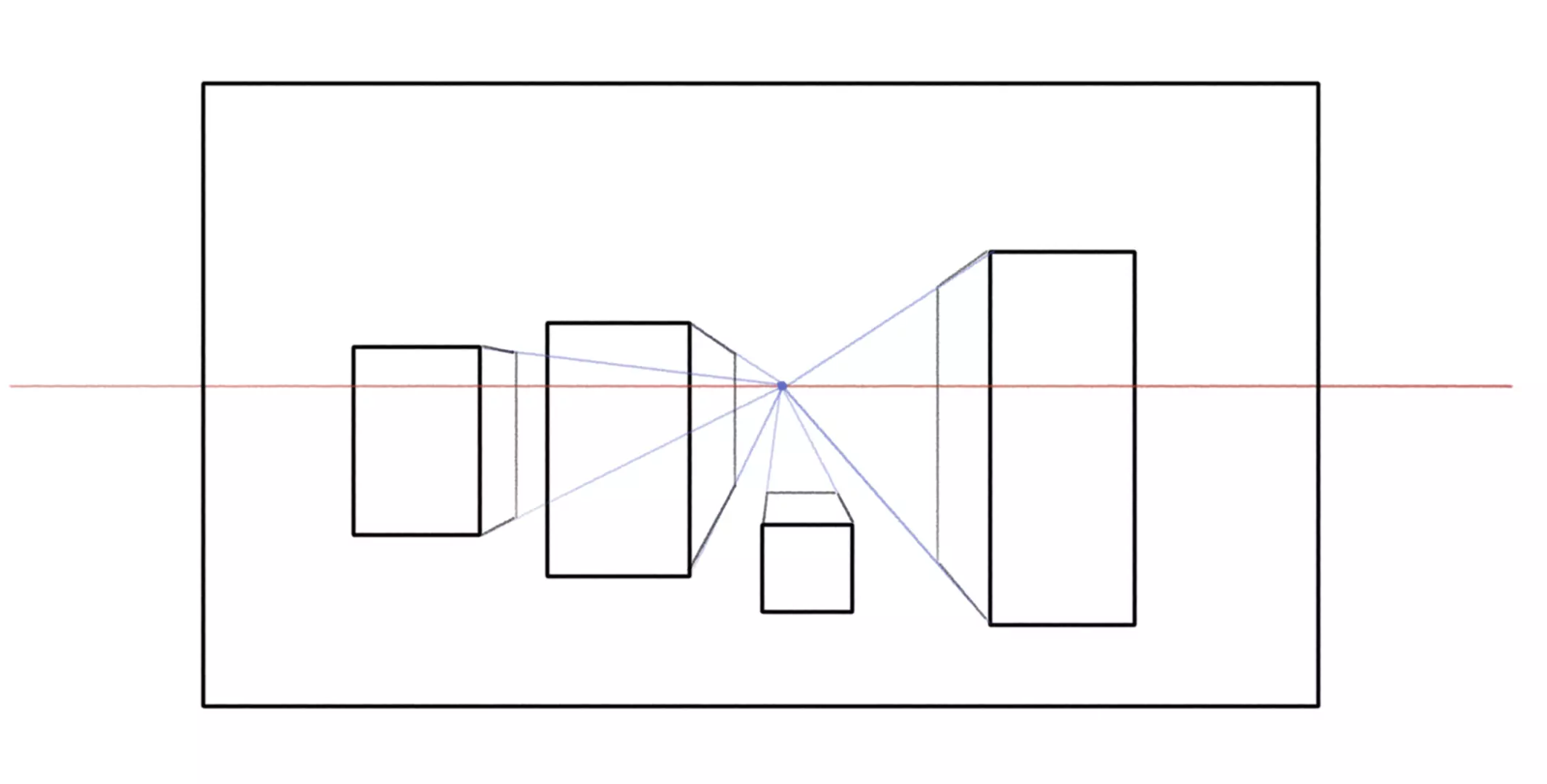
We can assume that these are buildings. They are all drawn from a one-point perspective.
If we move the horizon line, we can redraw the same scene, but this time from a bird's eye perspective. We will keep the same vanishing point and the front face of all our blocks, only the sides should change. In addition, it will be possible to see the upper face of the blocks:

You can have fun and try to recreate the same scene, but from a low-angle shot! To do this, place the horizon line below your blocks.
You now know everything about the horizon line! Feel free to complete your learning with the rules of perspective in order to create coherent scenes.
Great drawing, see you soon!
Illustrator and editor: Louis Grieves


Thank you for this article. A good review of the basics of perspective ;)
Exactly! A little reminder never hurts. 😇
This is a very good article that is useful for designers and photographers like myself as well. It gives us a wider field of vision by understanding how all this fits together
It's fascinating to see how the horizon line influences perspective in drawing! It's a beautiful metaphor for how our experiences shape our view of the world, just as the horizon line shapes our perception of a scene.
Thank you for your comment! I'm glad you found the article useful. You're absolutely right, understanding how these elements come together allows doodle jump for illustrators and photographers to broaden their perspective and improve their creative practice.